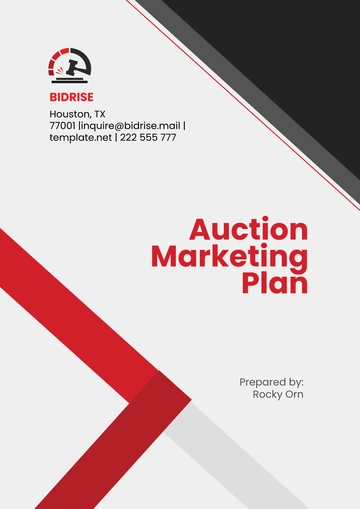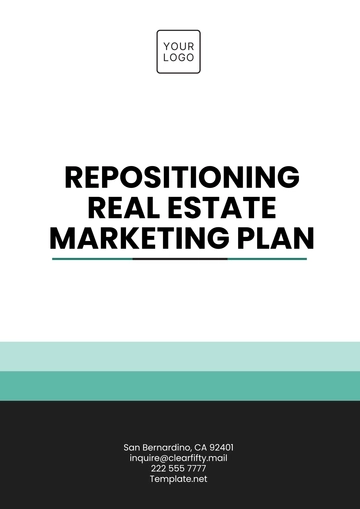Free Spa Marketing Plan

I. Executive Summary
Our spa is dedicated to providing exceptional wellness experiences, offering a range of luxurious treatments and personalized care. In the upcoming year, our marketing plan focuses on enhancing brand awareness, increasing customer engagement, and driving revenue growth through targeted strategies.
Key Strategies
Launch a digital marketing campaign to increase online visibility.
Enhance our loyalty program to increase customer retention.
Develop partnerships with local businesses and influencers to expand.
Introduce new spa packages and promotions to appeal to a wider audience.
Implement customer feedback mechanisms to continuously improve our services and meet customer expectations.
II. Market Research and Analysis
A. Industry Overview
The spa industry is a rapidly growing sector, with a global market size expected to reach $190 billion by 2055. In the United States, the spa industry generated approximately $18.3 billion in revenue in 2050, despite the challenges posed by the COVID-19 pandemic. The market is driven by increasing consumer interest in health, wellness, and relaxation.
B. Target Market
Our primary target market includes affluent individuals aged 25-55 who are seeking relaxation and rejuvenation. They value high-quality service, personalized experiences, and a peaceful environment. This demographic segment is willing to spend an average of $150-$300 per spa visit, including treatments and additional services such as dining or retail purchases.
C. Competitive Analysis
Our main competitors in the spa industry include well-established brands. Each competitor offers a range of services and has its own strengths and weaknesses.
Competitor | Market Share (%) | Strengths | Weaknesses |
|---|---|---|---|
15% | Strong brand recognition | High prices | |
10% | Loyal customer base | Limited service offerings | |
12% | Strong reputation | Higher turnover |
III. SWOT Analysis
Our SWOT analysis outlines the internal strengths and weaknesses of our spa, as well as external opportunities and threats in the market.
Strengths | Weaknesses |
|---|---|
Strong brand recognition | Limited marketing budget |
Experienced staff | Limited parking |
Wide range of services | Seasonal fluctuations in business |
Opportunities | Threats |
|---|---|
Growing wellness trend | Competition from new spas |
Expansion into new markets | Economic downturn |
Partnerships with hotels | Negative reviews or word-of-mouth |
IV. Marketing Channels and Tactics
To reach our target market effectively, we will employ a mix of digital marketing, traditional marketing, and strategic partnerships:
A. Digital Marketing
Social Media Marketing: Utilize platforms like Instagram, Facebook, and Twitter to showcase our services, engage with followers, and run targeted ad campaigns.
Email Marketing: Send out regular newsletters with promotions, updates, and wellness tips to our subscriber list.
Search Engine Optimization (SEO): Optimize our website content and meta tags to improve organic search visibility.
Content Marketing: Create blog posts, videos, and infographics that provide valuable information about wellness and spa treatments.
B. Traditional Marketing
Print Advertising: Place ads in local magazines, newspapers, and lifestyle publications.
Direct Mail: Send out postcards or brochures to targeted mailing lists.
Event Sponsorship: Sponsor local events, health fairs, or charity events to increase brand visibility.
C. Strategic Partnerships
Local Businesses: Partner with hotels, gyms, and wellness centers to offer joint promotions or packages.
Influencer Collaborations: Partner with wellness influencers or local celebrities to promote our spa services to their followers.
V. Budget Allocation
Our marketing budget for the upcoming year is $50,000, allocated as follows:
Marketing Channel | Budget Allocation ($) |
|---|---|
Digital Marketing | $20,000 |
Traditional Marketing | $15,000 |
Partnerships | $10,000 |
Miscellaneous | $5,000 |
Total | $50,000 |
Based on our projections, we anticipate a return on investment (ROI) of approximately 300% over the next year. This is based on an estimated increase in revenue of $150,000 directly attributed to our marketing efforts. Our goal is to continually analyze our ROI and adjust our marketing strategies to maximize effectiveness.
VI. Implementation Timeline
We plan to implement our marketing strategies over the course of the next year, with a focus on consistency and effectiveness:
Step | Timeline | Responsibility |
|---|---|---|
Launch Digital Marketing Campaign | Marketing Department | |
Enhance Loyalty Program | Customer Experience Team | |
Develop Partnerships | Business Development Team | |
Introduce New Spa Packages | Marketing and Sales Team |
VII. Performance Metrics and Evaluation
We will measure the success of our marketing strategies using the following key performance indicators (KPIs):
Metric | Target Value |
|---|---|
Increase in website traffic | 20% |
Growth in social media followers | 15% |
Increase in revenue | 25% |
Customer retention rate | 80% |
Performance will be evaluated on a quarterly basis, with a comprehensive review at the end of the year. We will analyze data from website analytics, social media insights, customer feedback, and revenue reports to assess the effectiveness of our strategies. Adjustments will be made as needed to improve performance and achieve our marketing goals.
VIII. Commitment
We are committed to executing our marketing plan with precision and dedication, ensuring that each strategy is implemented effectively to achieve our objectives. By monitoring our progress closely and adapting to changing market conditions, we are confident that we will succeed in enhancing our brand presence, engaging our target audience, and driving revenue growth.
- 100% Customizable, free editor
- Access 1 Million+ Templates, photo’s & graphics
- Download or share as a template
- Click and replace photos, graphics, text, backgrounds
- Resize, crop, AI write & more
- Access advanced editor
Template.net's Spa Marketing Plan Template empowers you to create a comprehensive marketing plan for your spa. This editable template allows you to customize strategies and tactics to meet your goals. Define your target audience and outline your marketing objectives with precision. The template is editable in our AI Editor tool, making it easy to create a plan that drives results. Elevate your spa's marketing efforts and attract more customers with a well-thought-out marketing plan.





























